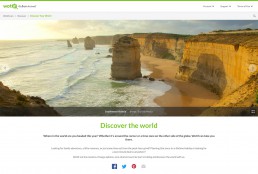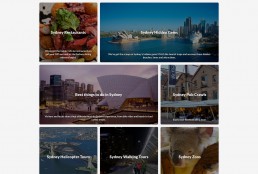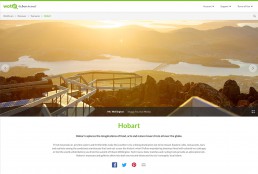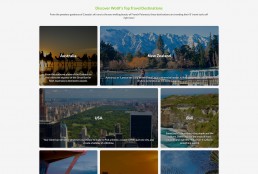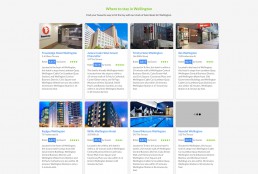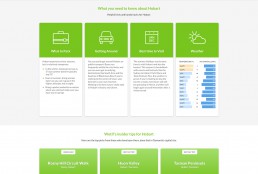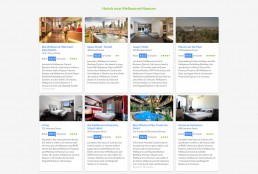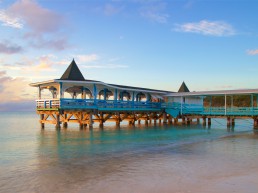How we create, publish and maintain scaled pages for Wotif that are deeply integrated with their in-house data and provide their customers with a richer user experience.
The Challenge
Wotif required the publication of semi-scaled destination guides on their platform to help customers make faster, more informed decisions about vacation options. These guides needed engaging media content, combined with extensive cross linking to lines of business (LOB) and other related destination pages.
Our Approach
Our UX and software engineering teams assessed numerous ‘off the shelf’ platforms; however, testing revealed there were no third-party solutions that would allow us to scale the required number of pages or control the complex page structures and cross-linking strategies required. The decision was made to create a platform that would satisfy these requirements. We called this ‘Explore’.
Our software engineers created an application with split-level architecture. The front end would publish the content, while the back end would supply the front end with finished data and content. Explore’s front end uses a system of templates, sectors and modules. Templates were created for each level of geography, attraction, neighbourhood, city, state and country. Each template consisted of horizontal sectors that were then populated by individual modules.
The back end is managed with a simple-to-use CMS called Page Builder. It allows a web publisher to create templates, add sectors and set rules around what content modules are displayed in each sector. To ensure the displayed modules are targeted and relevant, the publisher can set up rules about what types of modules, how many and in which order they are displayed per sector. This process is made simple by the integration of metadata that exists in the database giving the platform tremendous power to create and publish rich pages. Page Builder also supports the creation and publishing of one-off customised pages.
The content modules are the building blocks for ‘Explore’ pages and they start with a design or skin that is specific to a module type. Each individual module is populated with data such as photos, titles, short descriptions and links as required. Our software creates whole libraries of modules at scale which are then available to any page to publish. As data changes the modules are updated as necessary. Making changes to the user interface (UI) is a simple job of changing the CSS or design for that module or minor changes to the data if different elements need to be shown.
The Results
The Explore platform is successfully used to roll out scaled pages for Wotif travel guides. These pages are content rich and engaging for the customers with numerous cross links to help customers navigate their way to relevant pages. The platform is integrated with Wotif hotels and other lines of business which are automatically kept up to date using our client’s systems.
The platform has since been used on Travelocity for similar page types as well the main Expedia site where it is used to publish thousands of blog pages in five languages. All of these sites have a very different user experience, customised to their brand, but underneath it all lies the extremely capable and flexible Explore engine!

